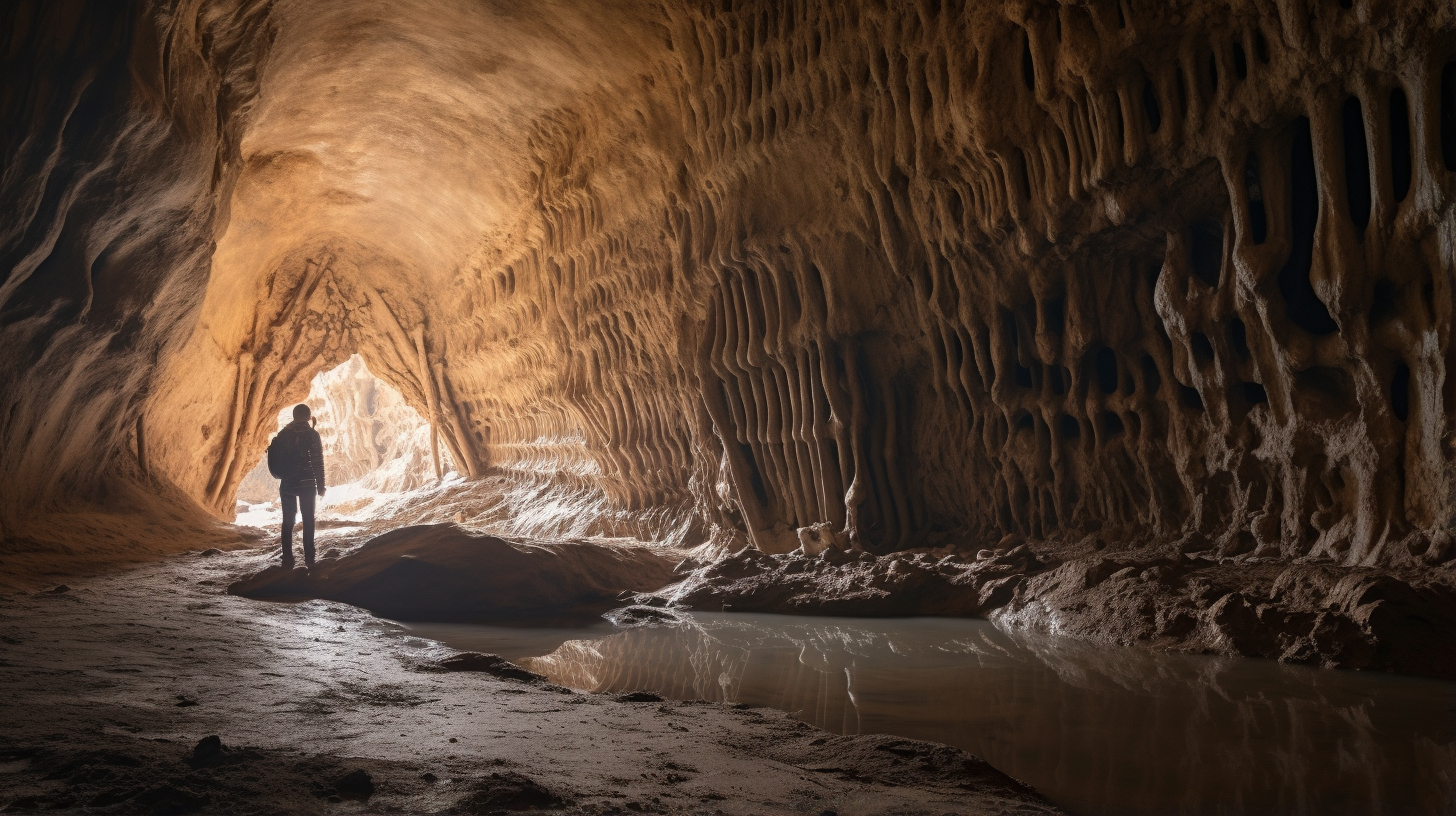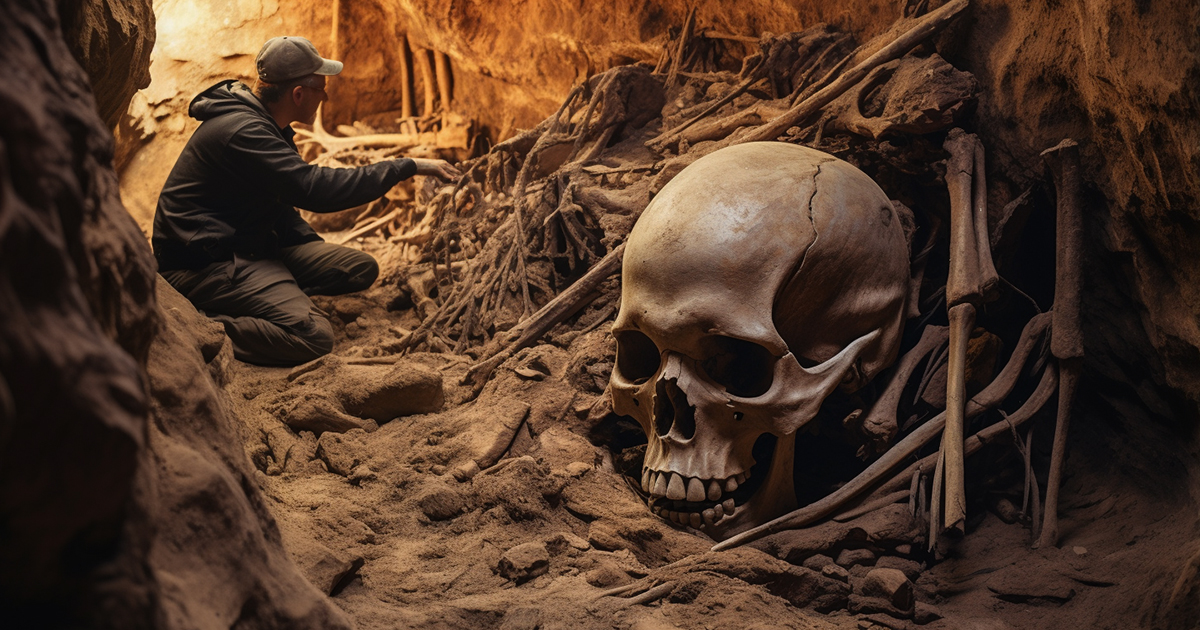In the year 1911, Lovelock, Nevada, bore witness to a remarkable event as two miners embarked on a routine expedition in search of bat guano for the production of fertilizer.
Little did they know of the extraordinary journey awaiting them. As they ventured deeper into the depths of the cave, they stumbled upon a discovery that surpassed all expectations.
Discovery of the Unknown
Deep within the cavern lay a collection of more than 40 human skeletons, a significant find in its own right. What set this revelation apart were the colossal sizes of some of these ancient remains.
These were not ordinary individuals. These skeletons stood tall at heights ranging from 7 to 8 feet, a size considered monumental in ancient times.

Historian Davis Weatherly recalls the impact of this find: “In 1911, Lovelock cave unveiled giant bones.” The presence of large human skulls and oversized skeletons challenged the conventional beliefs about the past inhabitants of the region.
These mysterious figures differed significantly from the Native Americans who once occupied the area.
Decoding the Mysteries
While many of the significant bones from Lovelock cave have faded with time, a few have found their way to a local museum, preserving a fragment of the enigmatic history that continues to puzzle researchers.
A decade ago, visitors could observe four massive skulls on display at the museum. Eventually, these relics were respectfully laid to rest, adding to the intrigue surrounding the gigantic inhabitants of the cave.
Equally baffling is the wide array of artifacts unearthed from Lovelock cave – over 100,000 items in total. These discoveries ranged from unusually large to outright colossal.
Gigantic sandals, seemingly crafted for a 9-foot-tall giant, were among the findings. Clothing of such immense proportions that only giants could have worn them further fueled curiosity.
Myths of the Past
The idea of enormous beings roaming the Old West may sound fanciful, yet historical records document numerous similar findings during the Wild West era. Tales of skeletal remains and bodies, distinct from regular humans, were quite common in the southwestern regions of the United States.
The concept of giants captivated the population of that era, aligning with their literal interpretations of biblical texts. The Bible hints at a time when giants walked the Earth. Uncovering skeletons that mirrored these ancient legends validated the deep-rooted biblical beliefs of many in the Wild West.
Connecting to Ancestral Legacies
To explore further into this enthralling narrative, delving into the history of the Indigenous Paiute community, long-standing inhabitants of the Nevada desert, becomes imperative.
Sarah Winnemucca, a descendant of Chief Winnemucca, documented an incident from the 1800s shedding light on a perilous chapter in her people’s past – their encounters with a tribe of giants known as the sai-duka’a.
Winnemucca’s narrative depicted a real conflict rather than a mere myth. The sai-duka’a, red-haired giants, lived near the Paiute tribe and practiced cannibalism.
Confronted with the menace of the giants, the Paiutes engaged in a three-year struggle. The final confrontation occurred in Lovelock cave, where the Paiute community sealed the entrances, eventually setting the giants ablaze.
Piecing Together the Puzzle
Remarkably, the evidence from Lovelock cave closely correlates with the Paiute legend. The discovery in 1911 unveiled signs of intense burning near the cave entrance, echoing Winnemucca’s descriptions. Additionally, strands of red hair preserved by Sarah Winnemucca Hopkins provided a tangible link to the Paiutes’ encounters with the red-haired giants.
An Intriguing Narrative
For many, the evidence supporting the Paiute saga is compelling, extending beyond Lovelock cave. Reports of giant bones surfacing from various sites in the Western Nevada desert further bolster the case for the existence of giants in the region, including an 11-foot tall skeleton found in 1904 and an 8.5-foot skeleton in 1931.
Video:
Legends passed down through generations hold more than mere folklore. They serve as threads connecting us to a rich past where ethnic conflicts, battles, and extraordinary encounters intertwined to shape the tapestry of human history. The discovery of giant skeletons in Lovelock cave remains an intriguing mystery, reminding us that the truths of antiquity often lie concealed within the enigmatic passageways of time.
